at USF Graphicstudio
Through March 2
Free
USF Contemporary Art Museum
Details here
Walking into this exhibition was a bit like the time I returned home to visit after many years away and my mother fixed me dinner. It was something very familiar and comforting, and new at the same time.
Once upon a time I worked as Exhibition Designer at CAM – the USF Contemporary Art Museum on the Tampa campus. I’m familiar with many of the pieces in the exhibition, have seen them in other shows, in the collections room storage, performed condition reports, seen them in CAM’s prep shop being repaired, or secured inside shipping crates on loan to other institutions.
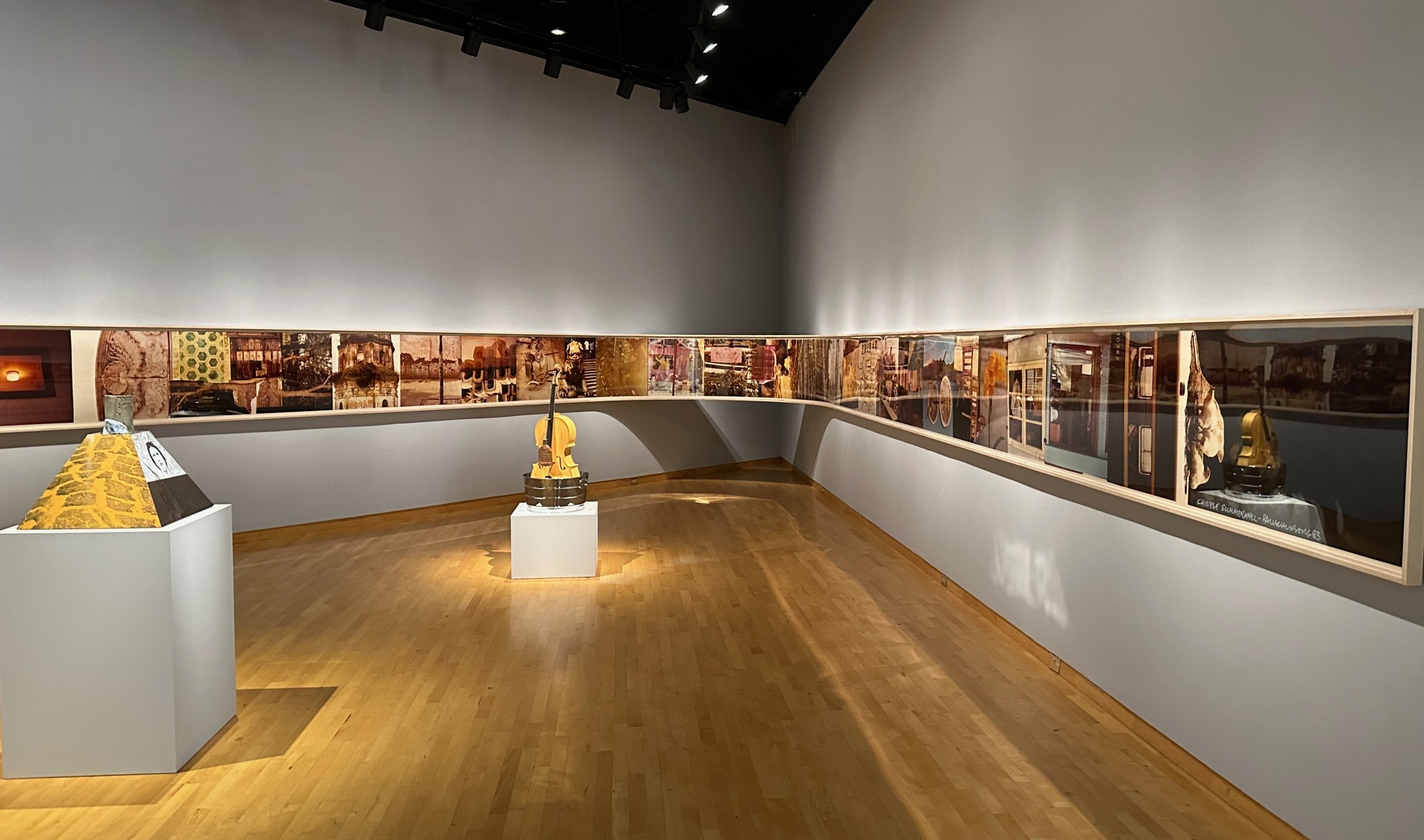
For example, I have installed Rauschenberg’s 100-foot long chromogenic collage print, Chinese Summerhall, twice – once at CAM and once at the Bob Rauschenberg Gallery in Ft. Myers, though neither time as elegantly done as it is now presented in CAM’s West Gallery.
This work has aged as my eyes have. The colors on the photo paper have changed from brightness, mellowed to a warm glow. The wrapped-around installation feels like arms, as the architect Lorenzo Bernini designed for St. Peter’s Square in the Vatican – embracing the whole gallery, and whoever enters.
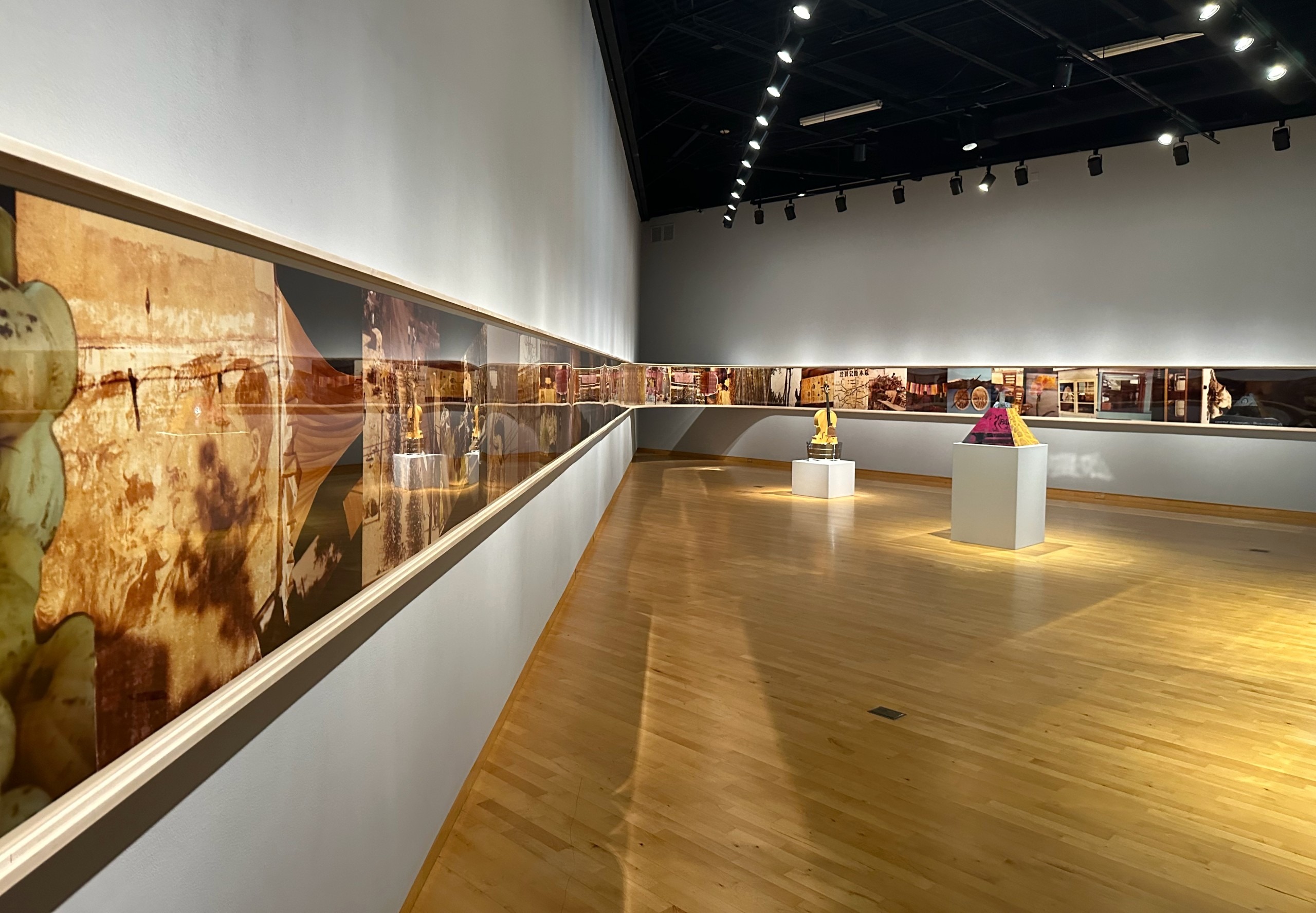
I also remember having to fix the frame on one of the Crops series. Ephemeral in appearance, they were a puzzle to me when I first saw them, like encountering poems by e. e. cummings, who eschewed capital letters, played around with punctuation, syntax, even spelling, or the way words or individual letters are arranged on the page. Just look at his poem, “l(a –” which is a vertical column of letters.
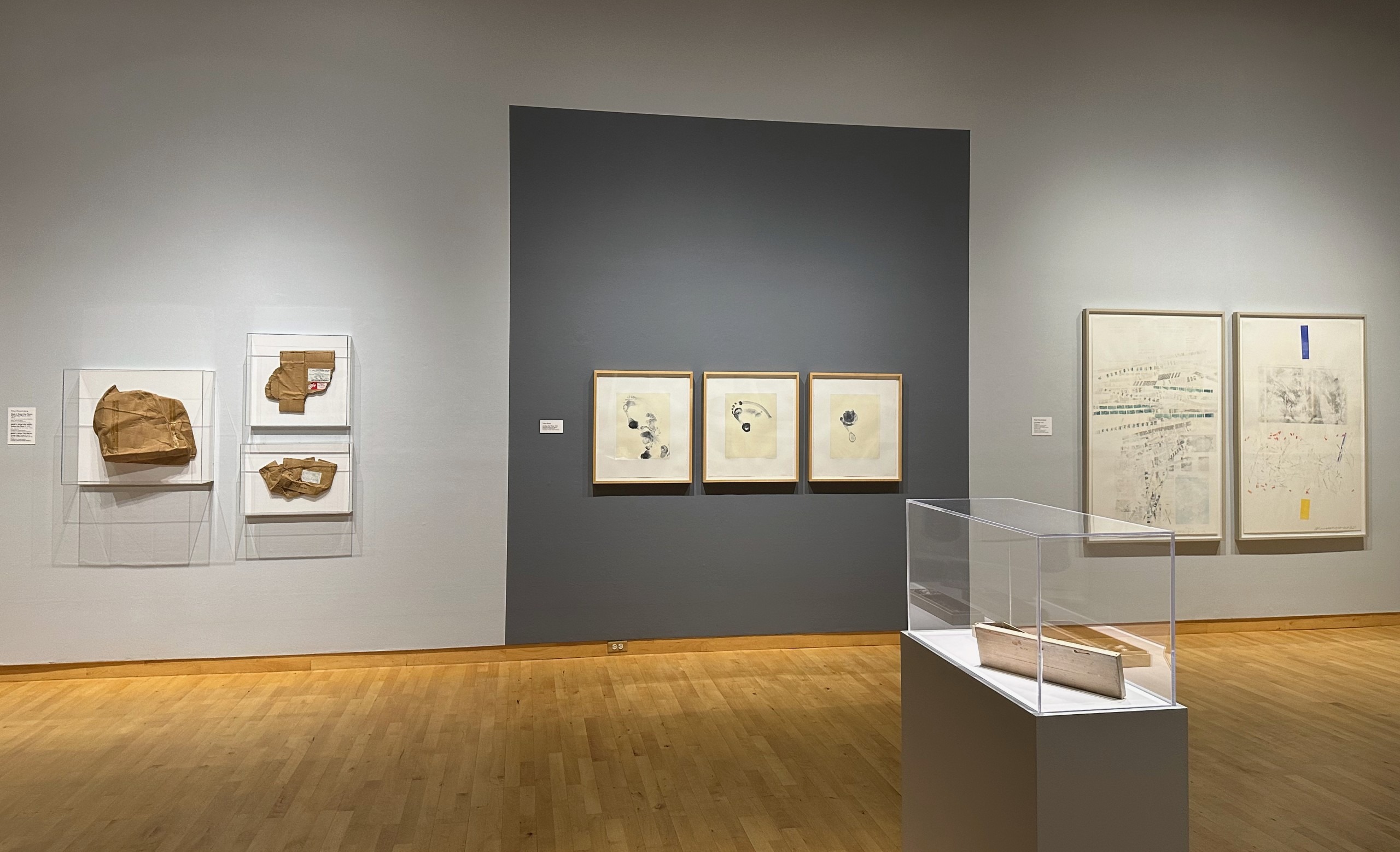
The Crops series are prints using solvent transfer, a process Rauschenberg brought to USF’s Graphicstudio, in his own way – playing around with visual language and the whole art-making process.
Solvent transfer is a one-time use of materials, as each transfer exhausts the ink in the newspaper and magazines, makes producing an edition challenging, as described by Mark Fredrick’s essay in the exhibition catalogue. . .
“This necessitated a reinvented approach to the idea of the limited edition. Each impression of Cactus, Coconut, Mangrove, Peanuts, and Watermelon varies greatly, maintaining consistency in structural elements and displaying significant diversity among the newspaper and magazine elements that comprise them.
“This level of variation within an edition was unheard of, leading one printmaker on the project to question whether the prints in Crops even qualified as editions. Rauschenberg was clearly comfortable with them as such, and Graphicstudio now use the term edition variée for editions that display this amount of variation.”
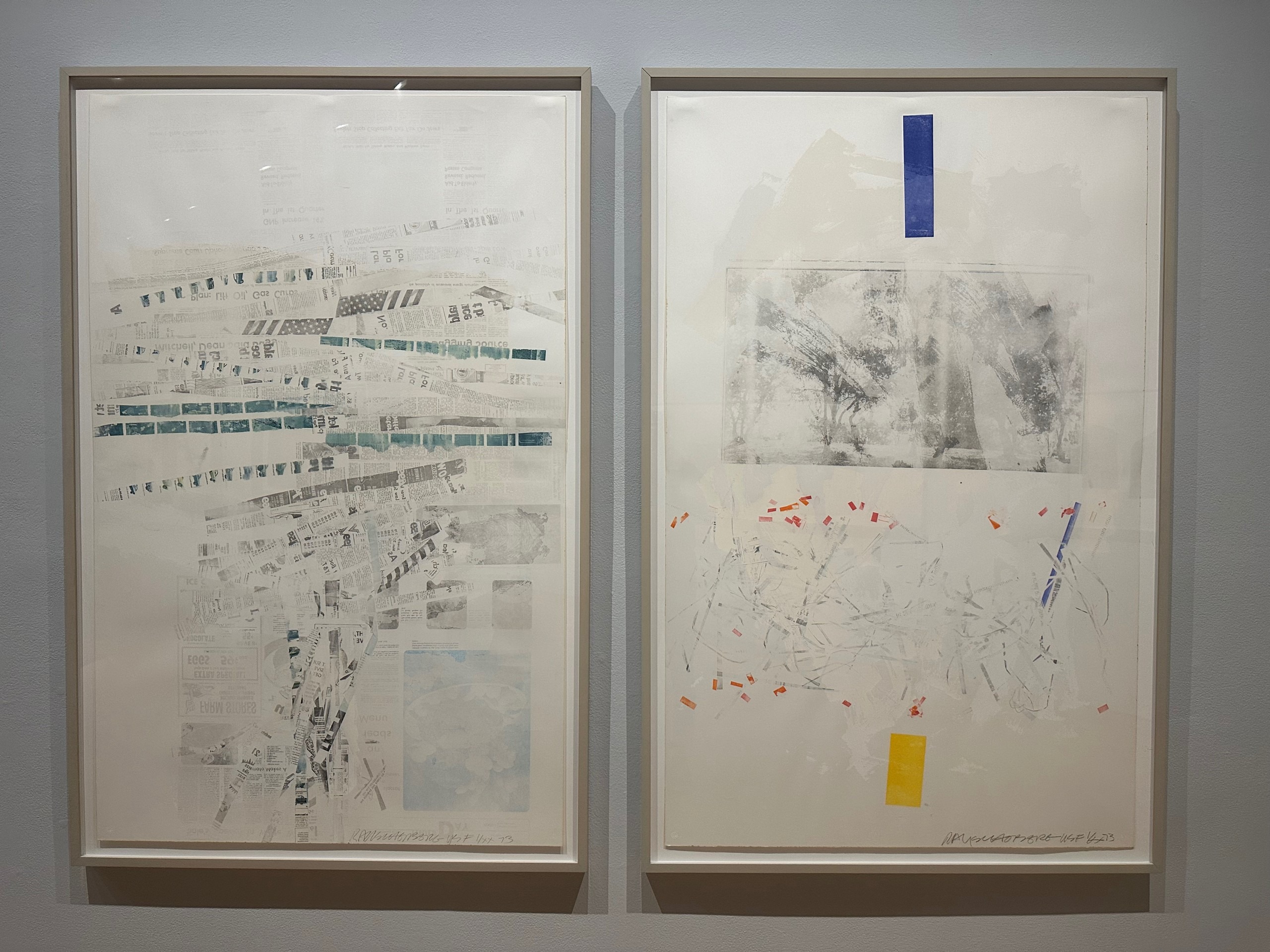
Two prints from the Crops series, Mangrove and Watermelon are in the exhibition, located in the Leavengood Gallery, appropriately next to Trisha Brown’s improvisational dancing feet.
Trisha Brown and Rauschenberg met in their common connection with dancer Merce Cunningham and developed a lifelong friendship, and deeply influenced each other in their respective creative fields. Brown elected Rauschenberg to be chairman of the board of her Trisha Brown Dance Company in 1970.
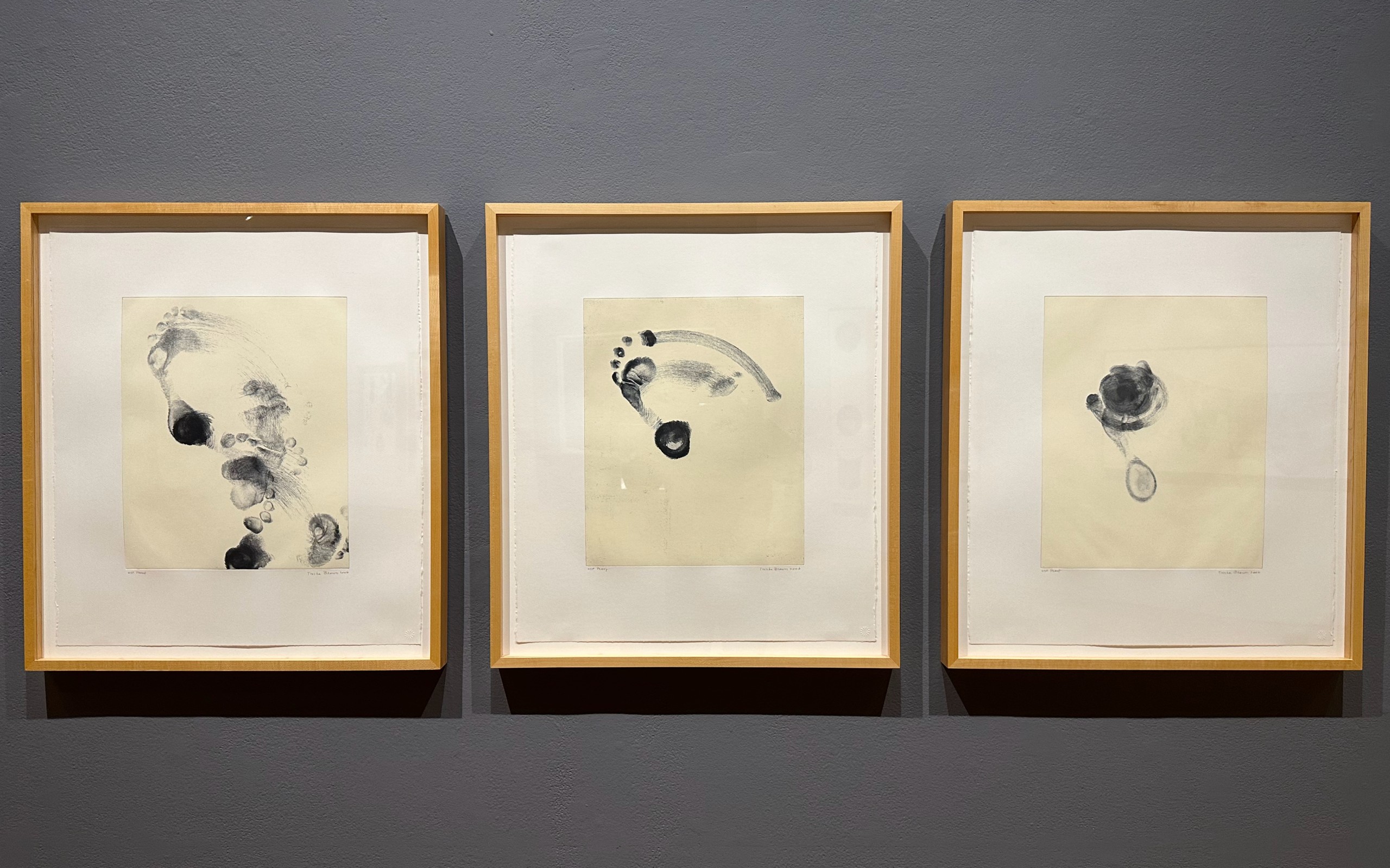
In 2006, Brown visited Graphicstudio and choreographed movements on etching plates placed on the floor. The resulting imprints of her feet became a series of kinetic prints.
Of those, Untitled (Set One), a suite of three prints is in the exhibition placed between the Crops series and Made in Tampa Clay Pieces.
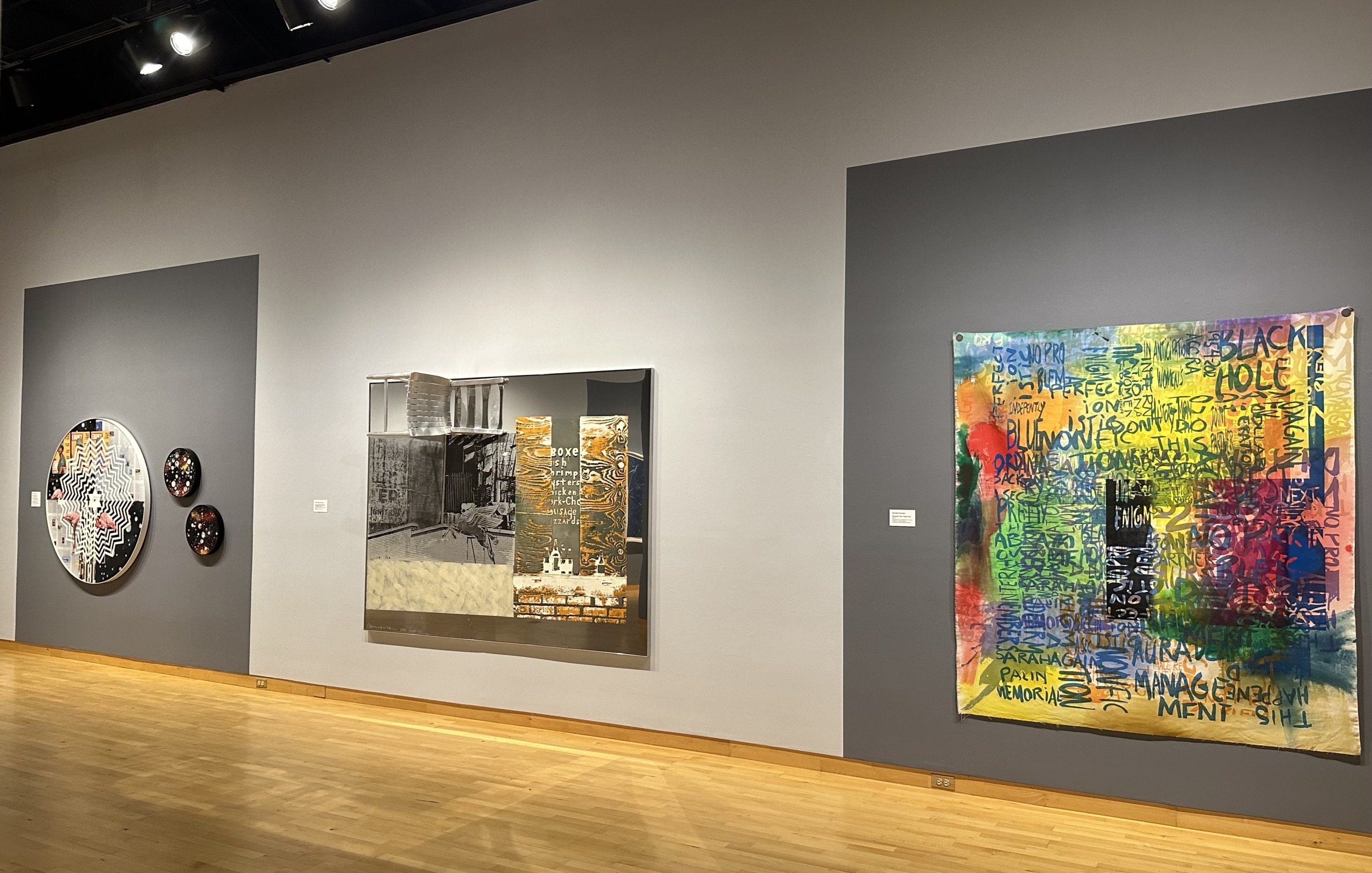
Besides Brown, Curators Margaret Miller and Mark Fredricks pair up five other artists – Tavares Strachan, Rochelle Feinstein, Narsiso Martinez, Bosco Sodi and Christian Marclay – with Rauschenberg pieces that may reflect similar sensibilities, use of materials, or were influenced by him in other directions.
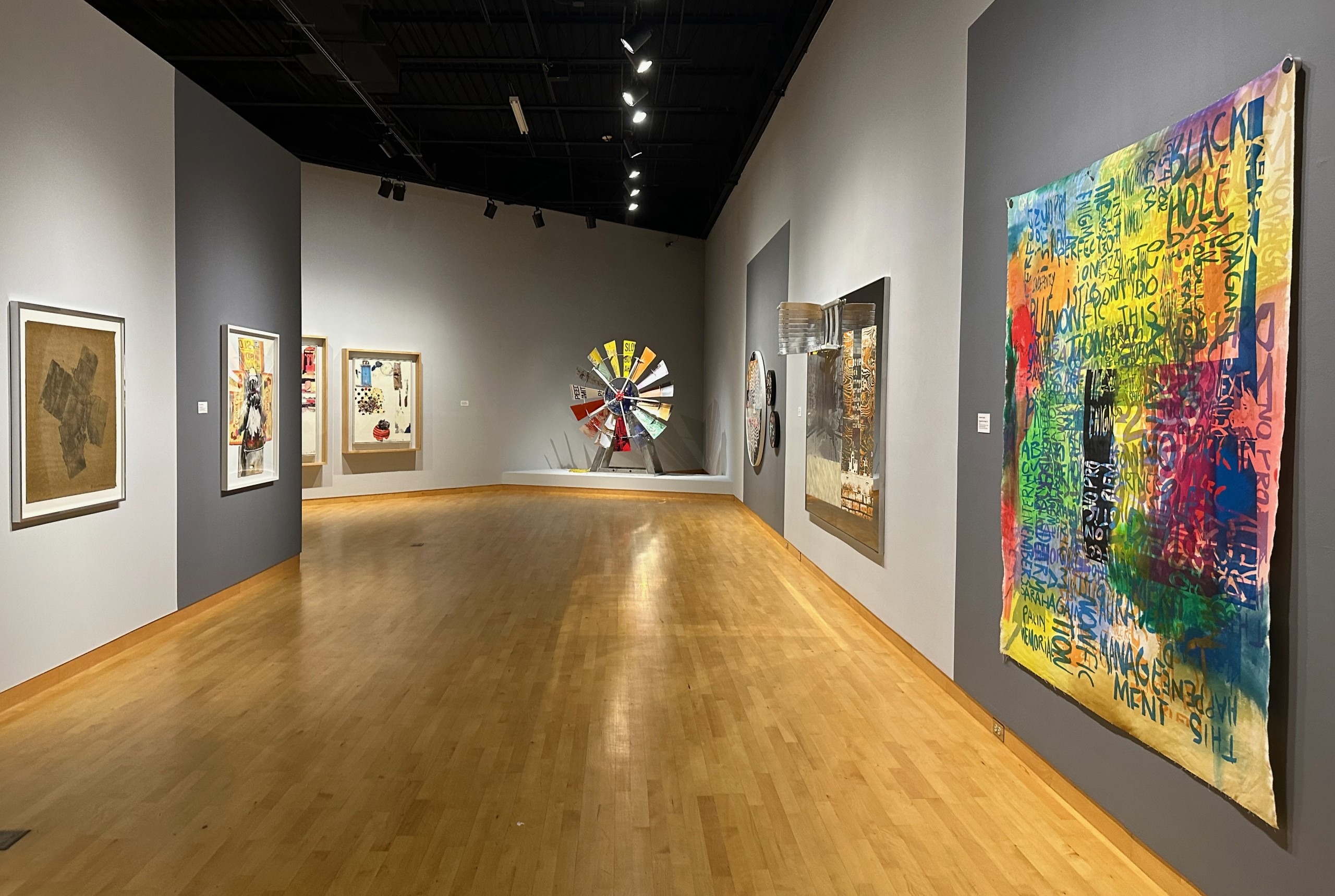
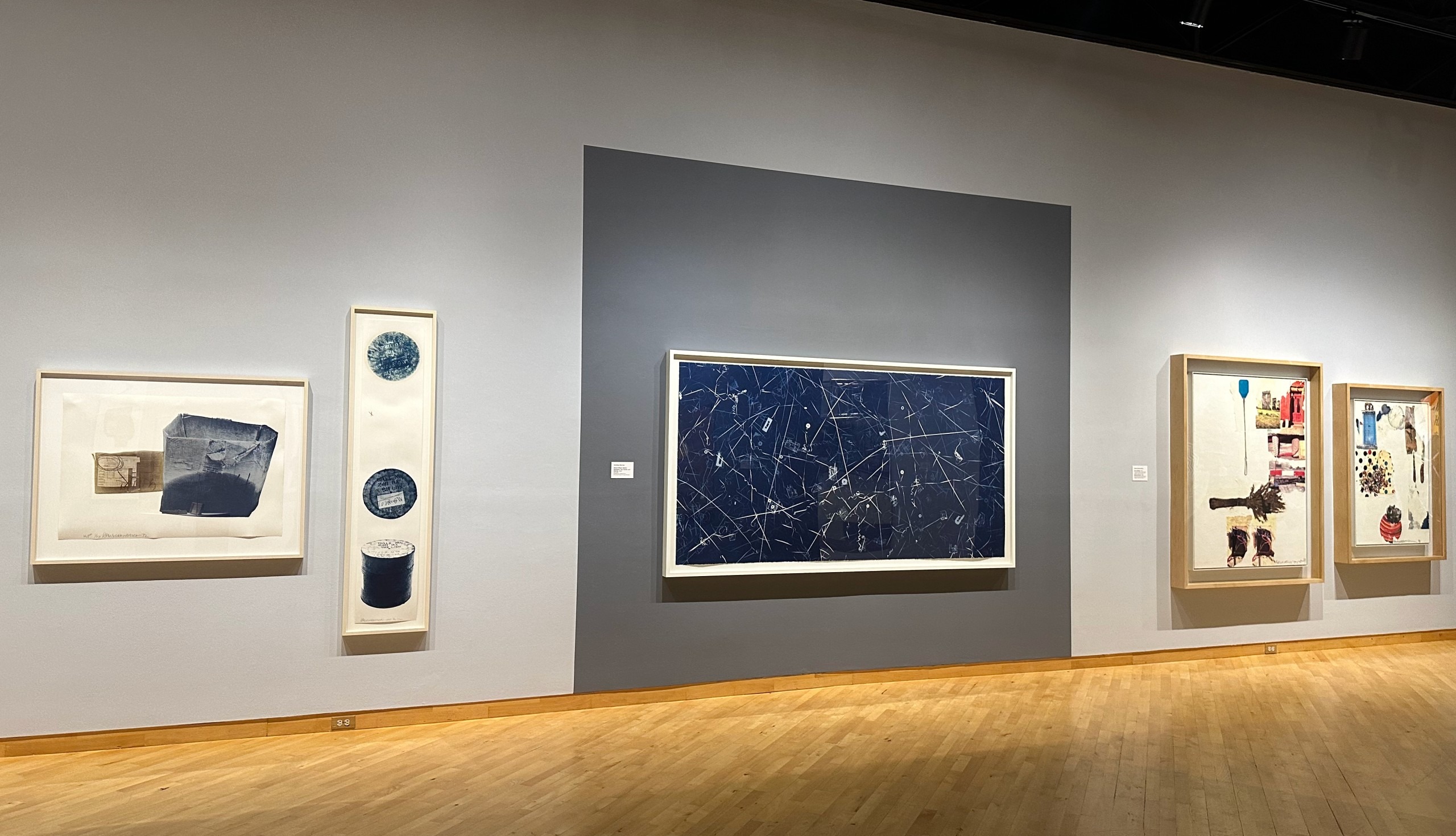
Even before his Combine series, Rauschenberg incorporated the quotidian, the detritus he sees everywhere, evolving from Duchamp’s use of chance and readymades.
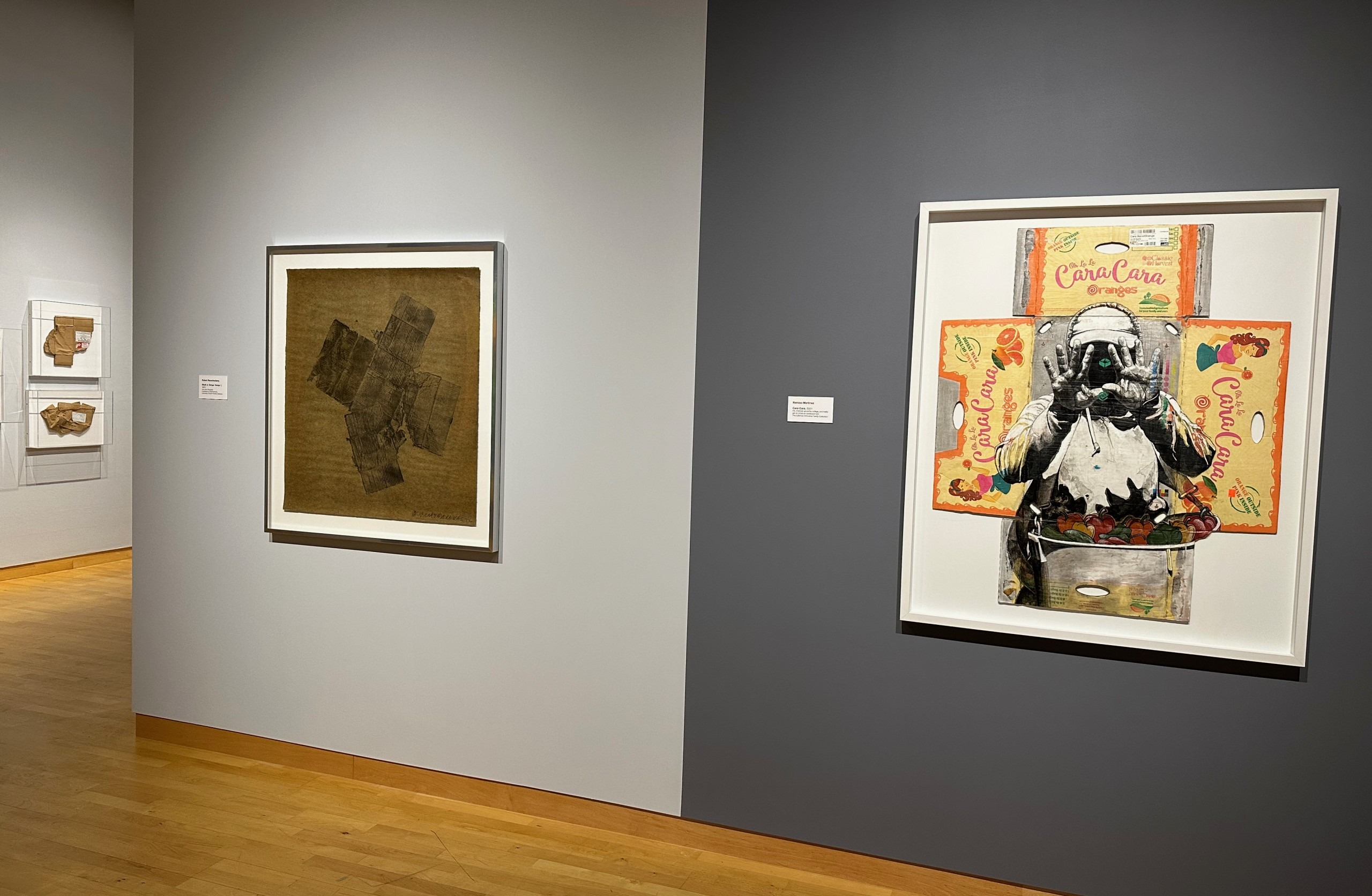
With this, couple of obvious visual pairings are Narsiso Martinez’s Cara Cara, portrait of a farmworker painted on a cardboard box, with Rauschenberg’s Made in Tampa: Tampa 1. And Bosco Sodi’s Untitled from Sun paintings with Rauschenberg’s Made in Tampa Clay Pieces: Tampa Clay Piece 5.
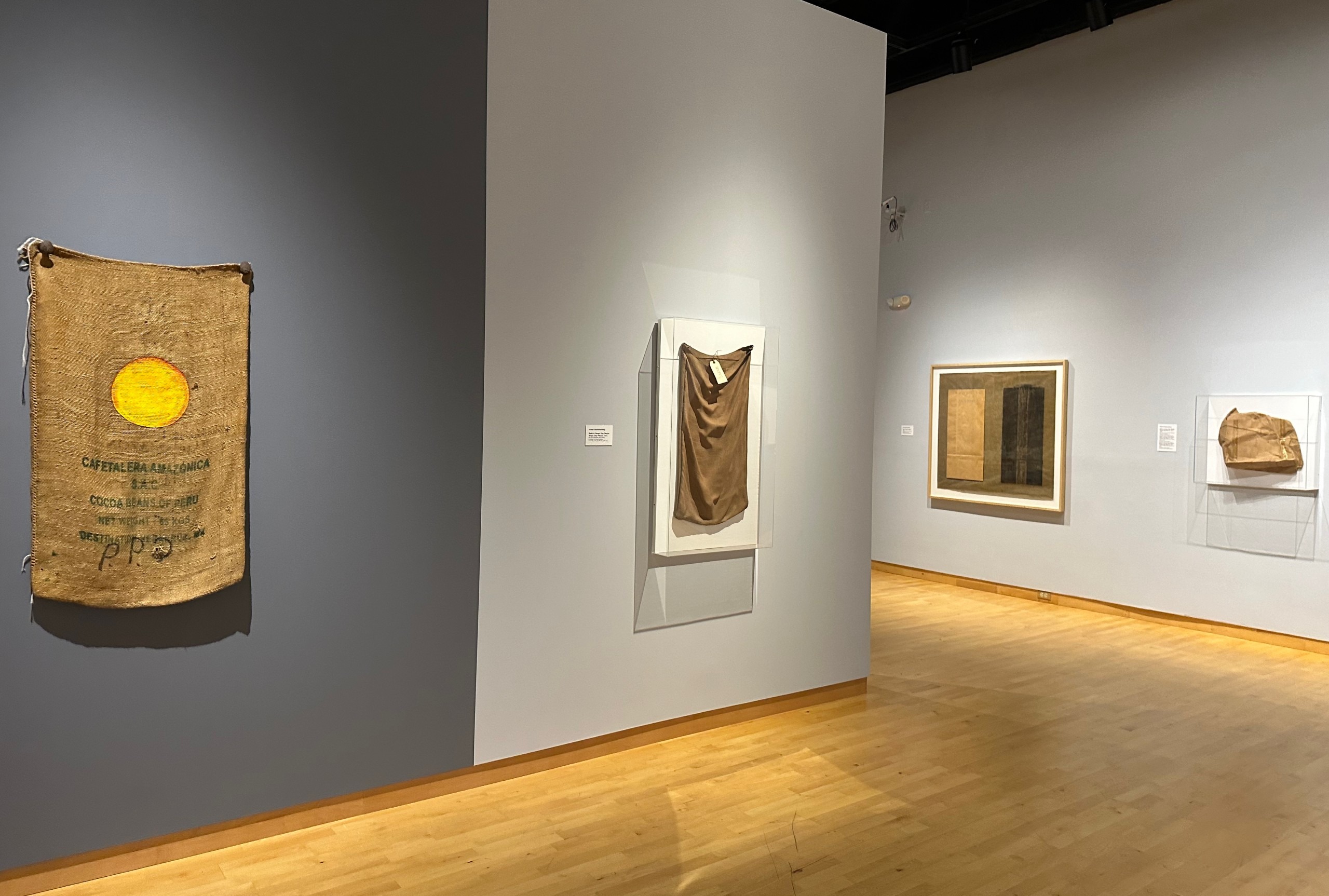
These groupings points to the commonness of the everyday, speaking to the archetypal human in both materials and purpose. Bosco Sodi’s seemingly cosmic Sun image on the burlap sack, is Earth’s Sun shinning down as we toil this field and gather its bounties – a human experience as universal as those in the Catalan nativity Caganer figurines.

Picasso once said, give me a museum and I’ll fill it – so now there’re more Picasso museums than fingers on both hands. There’re also eponymous museums for Dalí, van Gogh, Rembrandt, Andy Warhol… and in Iceland there’s Ásmundarsafn, a museum dedicated to the Icelandic sculptor Ásmundur Sveinsson.

Rauschenberg’s oeuvre could easily fill several museums to say the least – so maybe we will have a Robert Rauschenberg Museum at some point?
He certainly fills CAM, not only in the physical sense, but in the aesthetic field occupying whatever space available, a Higgs boson of art.

In this exhibition, while the focus is mainly on Rauschenberg’s history at Graphicstudio, Miller and Fredricks have curated from his other endeavors including samples from his ROCI project, his prints on fabric, his popular “failed” Time magazine cover commission Signs, a self portrait triptych, experiments with paper from a Chinese paper-making facility, and his works at Saff Tech Arts.
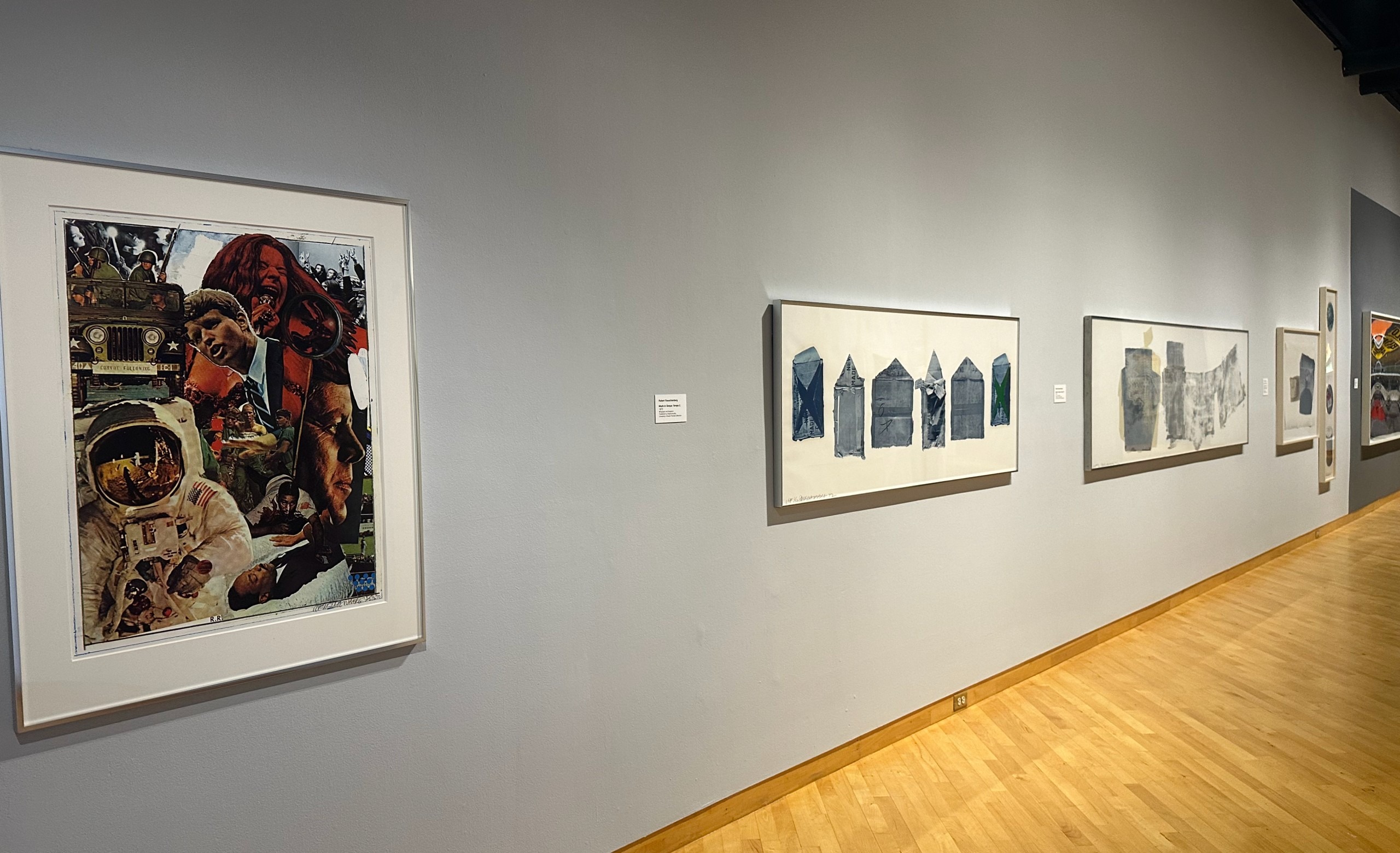
Saff Tech Arts, founded by Donald Saff was a major collaborator with Rauschenberg on many of the works in the exhibition. Saff was the founder and director of Graphicstudio, and the first to invite Rauschenberg to make art there.
He was also the Artistic Director for the Rauschenberg Overseas Culture Interchange project (ROCI, pronounced “Rocky” after the artist’s pet turtle). Several pieces in the exhibition are on loan from him and he donaterd Scatole Personali, a piece Rauschenberg created in Italy, to CAM.
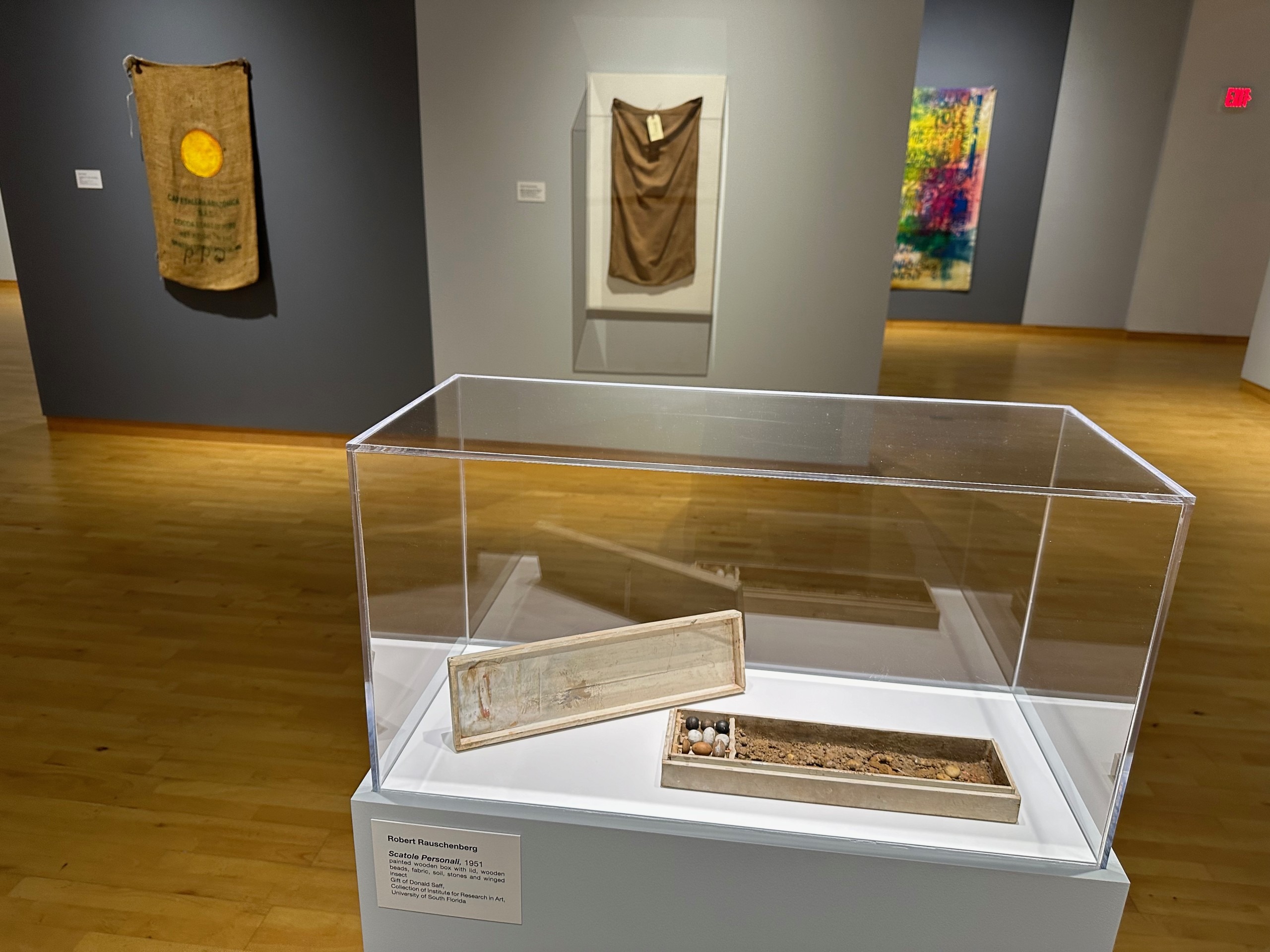
Donald Saff is a walking history book filled with stories as demonstrated during the artist talk with Margaret Miller on opening night.
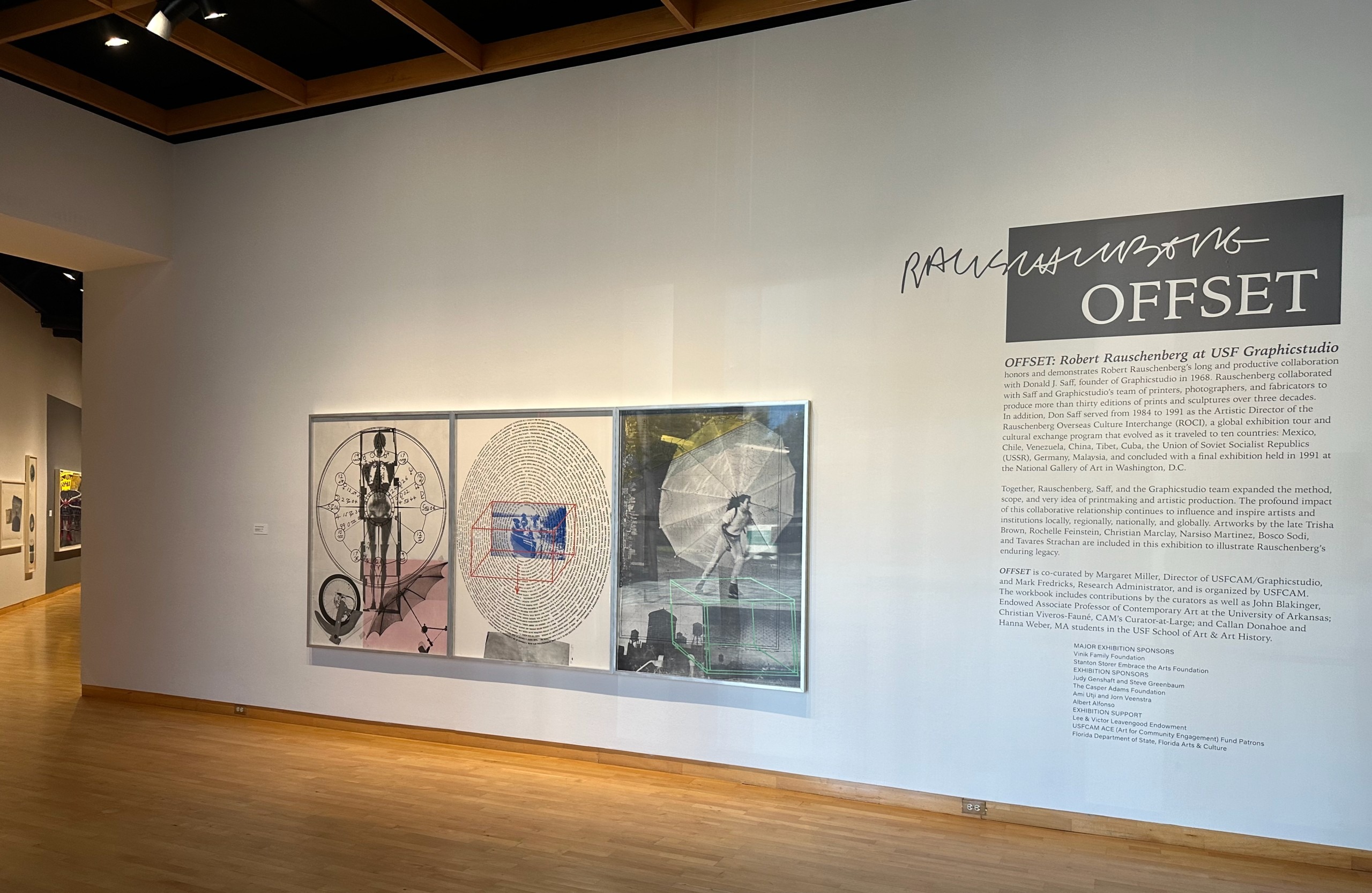
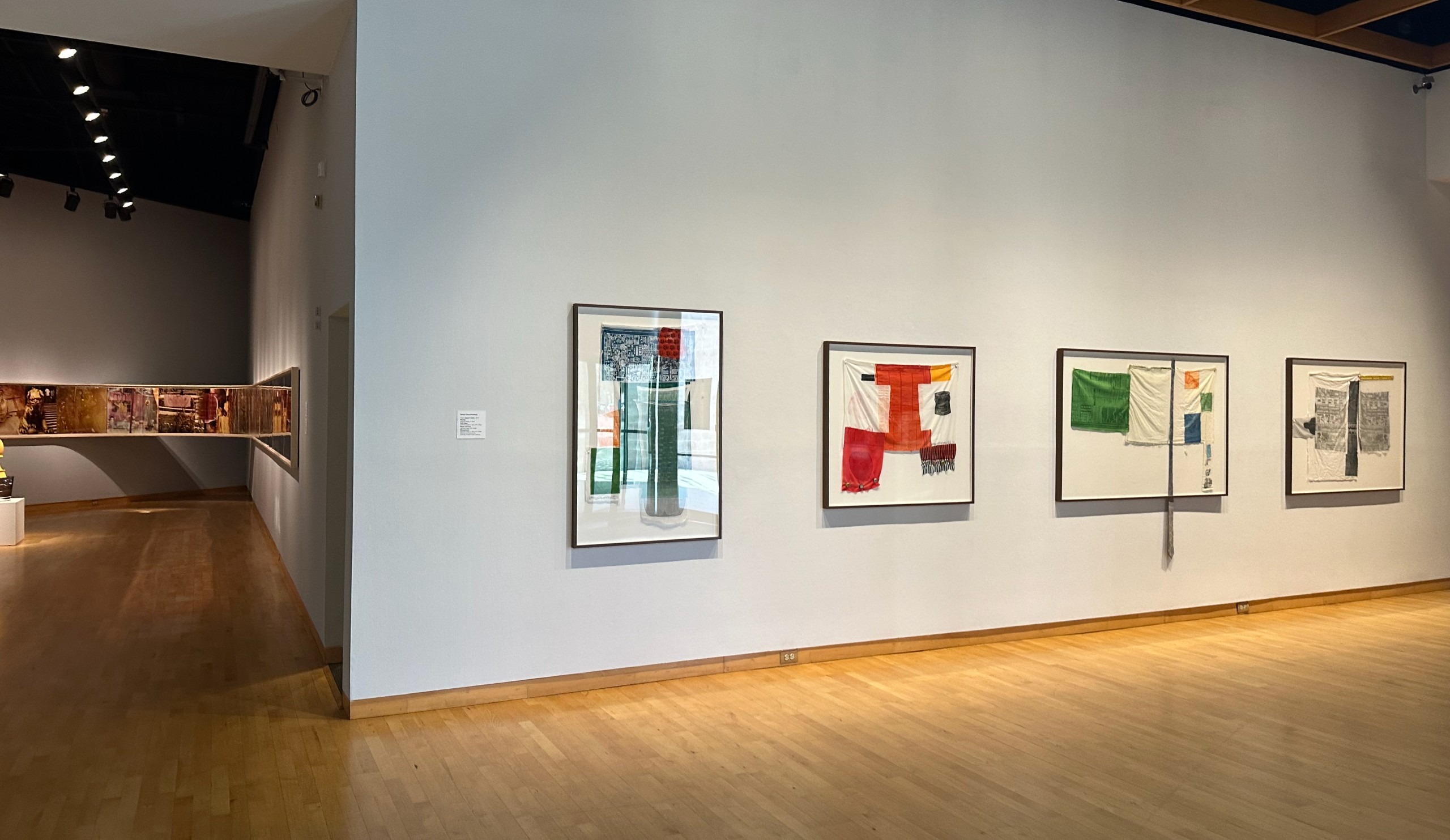
In this fractured moment, like the Cold War period in which Rauschenberg carried out his ROCI project, it is fitting to remember his comment from that time. . .
“I feel strong in my beliefs, based on my varied and widely traveled collaborations, that a one-to-one contact through art contains potent peaceful powers, and is the most non-elitist way to share exotic and common information, seducing us into creative mutual understandings for the benefit of all.”
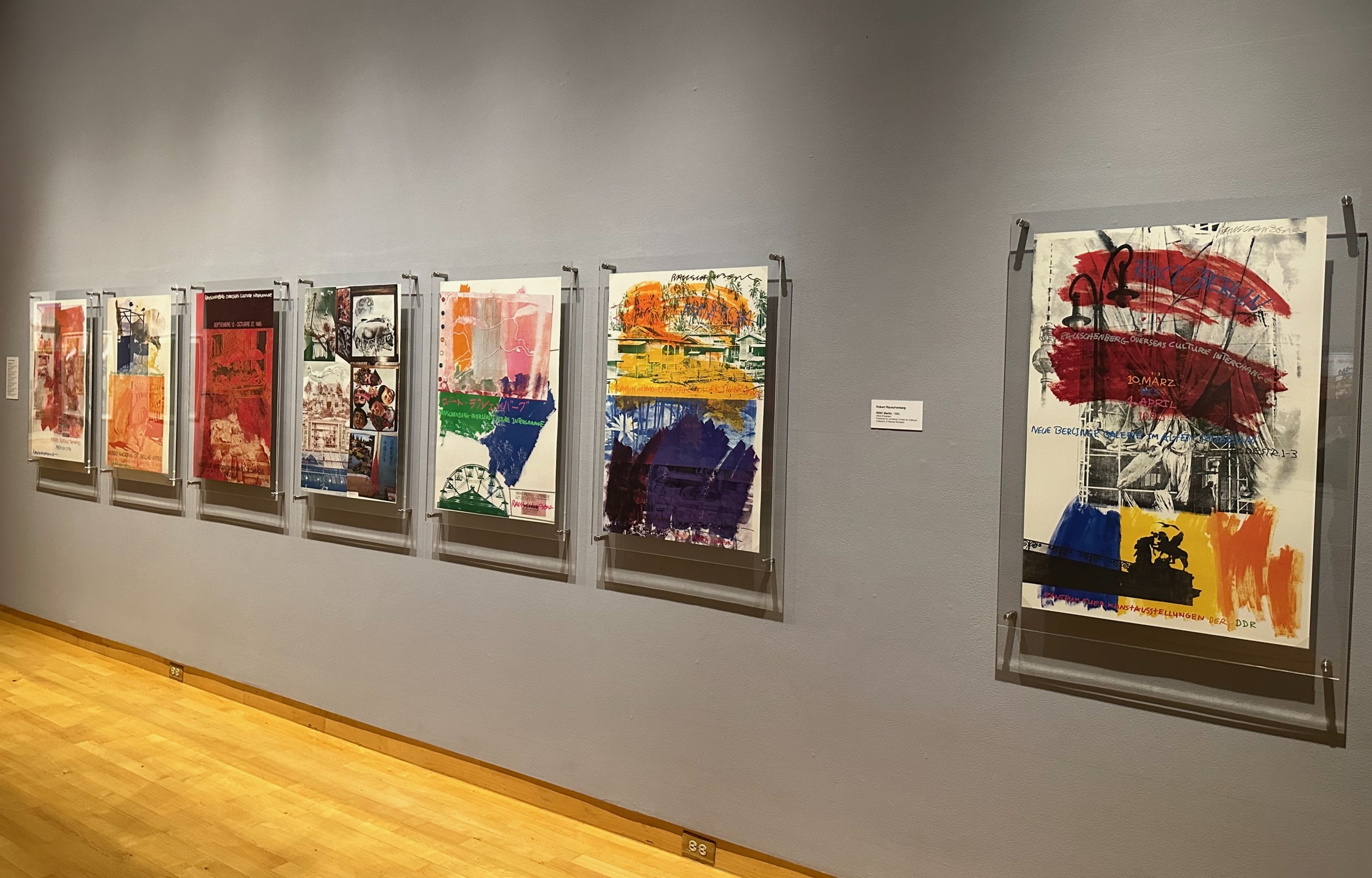
A side note on the exhibition catalogue mentioned above, it is free with visit to CAM, or you can download a copy from their website. Plentiful pictures in between essays by the Curators, the scholar Dr. John Blakinger, Curator-at-Large Christian Viveros-Fauné, and two MFA art historians who all provide much greater insight into the works in the exhibition – and more widely, Rauschenberg’s long and influential creative life.
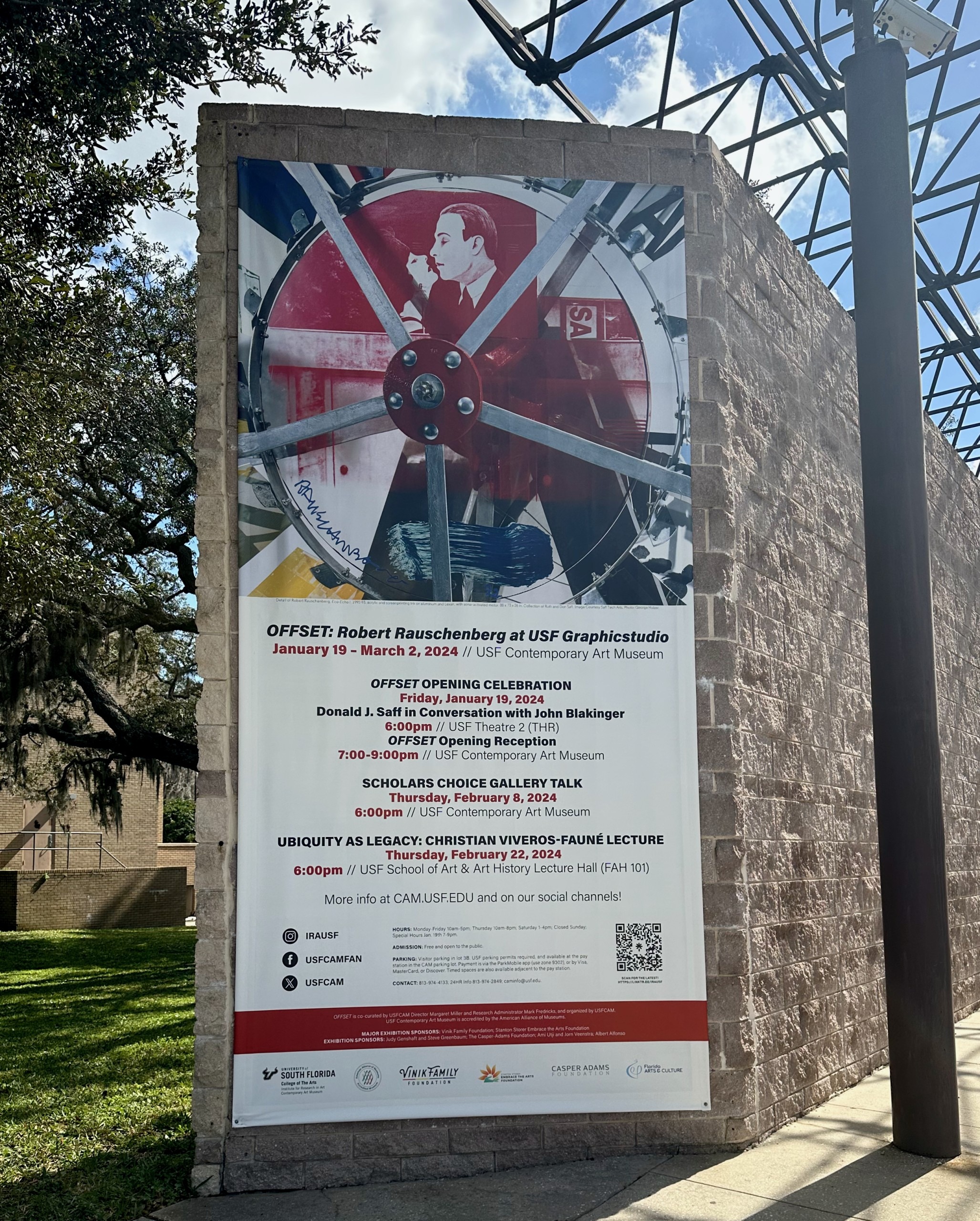
Final conclusion, CAM hit a home run. Silly dry January, THIS is the way to start the year!
Through March 2
Free
USF Contemporary Art Museum
3821 USF Holly Drive
Tampa FL 33620
813- 974-4133
Monday-Friday 10 am-5 pm
Thursday 10 am-8 pm
Saturday 1-4 pm
A virtual tour is available here.




